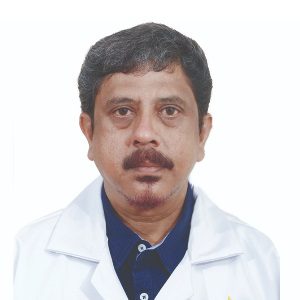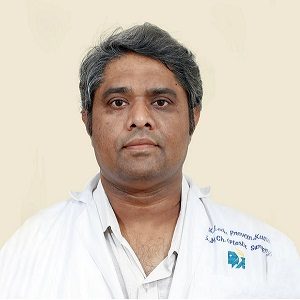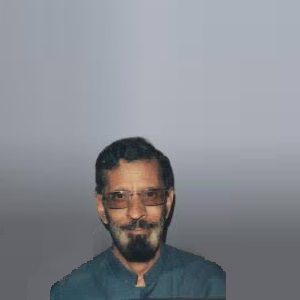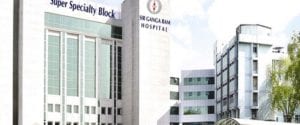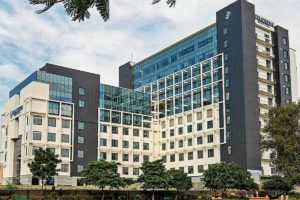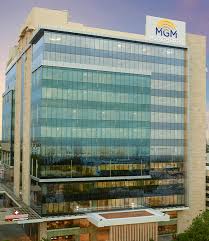Best Doctors in India for Liposuction Surgery
- Plastic Surgeon and Cosmetic Surgeon, Chennai, India
- Over 14 years’ experience
Profile Highlights:
- Dr. Kannan Prema is a bright young cosmetic surgeon in Chennai, working on aesthetics.
- With over 14 years of experience as a board-certified cosmetic surgeon, Dr. Kannan Prema is the ideal choice.
- She provides surgical treatments like breast reduction, Rhinoplasty, removal of skin tags, buttock liposuction, etc.
- Plastic Surgeon and Cosmetic Surgeon, Chennai, India
- Over 16 years’ experience
Profile Highlights:
- Dr. Kumaresan M N is one of the finest Cosmetic Surgeons in Chennai with nearly 16 years of experience in the field.
- He ensures the best aesthetics for his patients.
- The Tamil Nadu Medical Council has had him as a member since 1992.
- Plastic Surgeon and Cosmetic Surgeon, Chennai, India
- Over 22 years’ experience
Profile Highlights:
- Dr. Leela Praveen Kumar is one of the top Plastic Surgeons in Chennai with more than 22 years of dedicated experience.
- The doctor is frequently visited by the patients for Breast implants, Vaser Liposuction, rhinoplasty, facelift, Breast Reduction, Bariatric Surgery, Microsurgery, Body contouring, Hand surgery, and Onco Reconstruction.
- Dr. Leela Praveen Kumar also manages a non-Surgical fat reduction procedure, known as Cryolipolysis.
- Plastic Surgeon and Cosmetic Surgeon, Chennai, India
- Over 40 years’ experience
Profile Highlights:
- Dr. Sundararajan M S is one of the best Plastic Surgeons in India, having practiced for more than 40 years.
- The doctor offers lipo filling, body contouring, non-Surgical facelift, tummy tuck, implants, etc.
- Dr. Sundarajan bagged the Best paper award in 2008 & 2013 and the other Gold Medal for his contribution to the field.
- Plastic Surgeon, Cosmetic Surgeon, Gurugram, India
- Over 25 years’ experience
Profile Highlights:
- Dr. Aditya Aggarwal has been an eminent figure in the Department of Plastic, Aesthetic, and Reconstructive Surgery.
- Throughout his career, he has invested in microsurgical procedures of physical amputation across the globe.
- He has worked in India, Berlin, Taiwan, and Japan, and his bright career echoes from each corner of the world.
Best Hospitals in India for Liposuction Surgery
Narayana Superspeciality Hospital, Gurugram
- City: Gurugram, India
Hospital Highlights:
- Situated near DLF Cyber City, Gurugram, Narayana Superspecialty Hospital is one of the top medical facilities in the Delhi NCR region, catering to the needs of the people. Known for its commitment to quality medical care and patient service, the hospital is a state-of-the-art facility with planned and well-equipped sections, which includes a spacious OPD area as well as comfortable patient rooms.
- It is the closest super-specialty hospital from Indira Gandhi International Airport towards Gurugram, and also the nearest super specialty hospital from DLF Cyber City. It is also close to major residential areas in Gurugram.
- It is part of the renowned Narayana Health Group. Established in 2000, by Dr. Devi Shetty, a renowned cardiac surgeon, it has grown to be one fo India’s leading healthcare groups.
Sir Ganga Ram Hospital, New Delhi
- City: New Delhi, India
Hospital Highlights:
- Sir Ganga Ram Hospital, New Delhi is known to provide the latest medical procedures with the latest technology in all of its units.
- The hospital has a team of reputed doctors, nurses, and healthcare professionals that ensure that patients receive quality care at affordable costs.
- Staffed with a team of highly qualified doctors, dedicated nurses, and paramedical and non-medical staff, the hospital aims to lead in healthcare delivery, medical education, training, and research.
- As per the vision of the founder, the hospital also provides free treatment to the economically weaker sections of society.
- Sir Ganga Ram Hospital also provides training to young doctors under the Diplomate in National Board(DNB) program. The DNB program at the hospital was started in 1984 and it is known for currently running the maximum number of DNB specialties in the country. It also has the distinction of having the first bone bank in India.
KIMS Hospital, Hyderabad
- City: Hyderabad, India
Hospital Highlights:
- KIMS Hospital (a brand name of Krishna Institute of Medical Sciences) is one of the largest and best multi-speciality hospitals in Hyderabad. The hospital provides various treatments to an enormous number of patients.
- The hospital has a capacity of more than 3000 beds. KIMS Hospitals offers different healthcare services in more than 25 specialities and super specialities.
- The hospital is equipped with modern medical equipment and technology. It has robotic equipment to provide minimal invasive techniques for patients.
- The hospital is aimed at providing world-class healthcare facilities and services at an affordable cost for patients.
- The various specialities and departments of the hospital include neurosciences, gastroenterology & hepatology, robotic science, reproductive sciences, dental science, oncological sciences, organ transplantation, heart and lung transplantation and mother and child care.
Fortis Hospital, Shalimar Bagh
- City: New Delhi, India
Hospital Highlights:
- Fortis Hospital in Shalimar Bagh is a multi-super specialty hospital that strives to provide world-class patient care by leaving no stone unturned.
- Fortis, Shalimar Bagh, with 262 beds and a 7.34-acre footprint, provides the best level of medical care through its team of doctors, nurses, technicians, and management professionals.
Reliance Hospital, Mumbai
- City: Mumbai, India
Hospital Highlights:
- Reliance Hospital is one of the best super-specialty care hospitals in Navi Mumbai.
- The main purpose of this hospital is to become a trustworthy place for the best health and hope for society. The hospital is well connected to the suburbs of Mumbai and Navi Mumbai.
- The hospital has various specialty departments, viz., Accident & Emergency, Anesthesiology, Dental Services, Dermatology, Diabetology, Dietetics Nutrition, Endocrinology, ENT, Gastroenterology, General Surgery, Gynaecology And Obstetrics, Hepato Pancreato Biliary Surgery, Infectious Disease, Internal Medicine, Interventional Radiology, Laboratory Medicine, Minimal Access Laparoscopic Surgery, Nephrology, Neurosciences, Opthalmology, Orthopaedics, Paediatrics, Pain Management Palliative Care, Physical Medicine Rehabilitation, Plastic And Reconstructive Surgery, Psychiatry, Pulmonary Medicine, Radiology, Rheumatology, Transplant, Urology Andrology, Vascular Surgery
Lilavati Hospital & Research Centre, Mumbai
- City: Mumbai, India
Hospital Highlights:
- Lilavati Hospital & Research Centre is India’s premier multi-speciality tertiary care hospital and has been recognised as a global medical excellence centre.
- Lilavati Hospital & Research Centre has built an unrivalled level of trust with its patients over the years, thanks to a solid foundation that comprises cutting-edge facilities, the best medical competence, research, education, and charity endeavours.
- The hospital is quite proud of the fact that it now serves patients from all kinds of backgrounds, not just from the United States but from all around the world.
- The hospital has a total of 323 beds, one of the largest Intensive Care Units (ICUs), 12 Operation Theatres with modern amenities, over 300 consultants, and almost 1,800 personnel.
Venkateshwar Hospital, Dwarka, New Delhi
- City: New Delhi, India
Hospital Highlights:
- State-of-the-art technology and devoted healthcare professionals have been brought together under one roof at Venkateshwar Hospital to provide genuine medical care. The hospital’s professionals work together as a team to deliver the best possible treatment to their patients, using the most sophisticated equipment and information technology.
- Venkateshwar Hospital’s mission is to attain global excellence in healthcare by employing evidence-based, ethical clinical practices and cutting-edge technology by a team of highly skilled experts.
MGM Healthcare, Chennai
- City: Chennai, India
Hospital Highlights:
- Located in Chennai, India, MGM Healthcare is a top multispecialty hospital that provides all medical services under one roof.
- Since its founding in 2019, MGM Healthcare has quickly become a leading national referral centre, creating several innovative flagship initiatives.
- MGM Healthcare combines next-generation medical and digital technologies to provide better patient results.
- With 12 centres of excellence, more than 400 inpatient beds, 100 intensive care unit beds, and 24/7 emergency care, MGM Healthcare leaves no chance in redefining the patient experience in Chennai.
- MGM Healthcare boasts 250+ expert doctors across 30+ departments, including Cardiology, Pulmonology, Neurology, Obstetrics & Gynaecology, and more.
- They house 12 specialized Centres of Excellence, including Neurosciences, Orthopaedics, and Multi-Organ Transplantation.
- Their team of doctors, nurses, and paramedics works together to give every patient individualized treatment.
Liposuction
Liposuction, which is also termed as lipectomy, lipoplasty or liposculpture suction, is a type of cosmetic procedure, which can break up and suck the fat out of the body. It can be used to remove fat from body parts such as the abdomen, neck, buttocks, chin, back, etc. The fat is removed using a hollow instrument known as a cannula, inserted under the skin, after which a powerful, high-pressure vacuum is applied to it. The procedure is carried out under general anesthesia.
Though liposuction can permanently remove fat cells in one’s body, which will alter the body shape, one needs to remember that if the patient refuses to lead a healthy lifestyle after the operation, there is a huge risk that the remaining fat cells will grow even bigger. Though there are some risks in this operation, it is linked to the amount of fat that was removed during the procedure. After the procedure, the skin molds itself to the new contours of the areas which were treated. If your skin tone and elasticity are good, the skin will likely appear smooth. However, if you have thin skin with poor elasticity, the skin in the treated areas might appear loose.
To be able to go through liposuction, it is important that you are in good health without conditions that might cause complications to the procedure. If you have conditions such as diabetes, weak immunity, restricted blood flow or coronary artery disease, complications might likely occur.
Why it is done
People who go through this procedure have more body weight than normal. Therefore, they use it to remove undesirable fat deposits in some specific body parts. However, liposuction should not be considered a treatment for obesity or an overall weight-loss method.
The main purpose of liposuction is to improve the appearance rather than to provide benefits to physical health. The same or even better results can be achieved through a healthy lifestyle, a healthy balanced diet, exercising regularly and proper sleep. Liposuction is advisable only if lifestyle changes have been unable to achieve the results which one was expected. Before one goes for the operation, proper consultation with the doctor is highly recommended.
Preparation
Before the procedure, it is important that you discuss with your surgeon regarding your expectations from the procedure. Your surgeon will review your medical history and ask you regarding any medical conditions which you might be having and any medications, herbs or supplements that you might use. Your surgeon might also ask that you stop taking certain medications such as NSAIDs, at least around three weeks before the procedure is performed.
If only a small amount of fat needs to be removed, your procedure can be done in an office setting. But if a large amount needs to be removed, the procedure has to be done in a hospital, and it will require you to stay overnight as well. In either case, you should consider arranging someone who can drive you home and can stay with you for at least the first night after the procedure.
Types of Liposuction
Tumescent Liposuction is known to be the most common type of liposuction. The surgeon first injects a sterile solution, which is a mixture of saltwater to aid in removing the fat, an anesthetic to relieve the patient’s pain and a drug that will make the blood vessels constrict into the areas that are being treated. Due to the mixture, the affected areas might swell and stiffen.
After this, the surgeon makes small cuts into the patient’s skin after which he inserts a cannula, a thin tube into the skin. This is connected to a vacuum that will suction the fat and fluids from the body. Your body fluid can also be replenished through an intravenous line.
Laser-assisted liposuction is another technique that uses high-intensity laser light which breaks down the fat to remove them. During this technique, the surgeon inserts a laser fiber through an incision in the skin and emulsifies the fat deposits. After this, a cannula is used to remove the fat.
Power-assisted liposuction is another type of liposuction in where the surgeon uses a cannula which moves in a rapid back-and-forth motion. Due to this vibration, the surgeon can pull out tough fat far more easily as well as faster. This method also involves less pain and swelling and allows your surgeon to remove the fat more precisely. This technique is usually used when you have large volumes of fat that require removal.
Ultrasound-assisted liposuction is a type of liposuction is used in conjunction with the traditional liposuction method. During this method, the surgeon inserts a metal rod, which emits ultrasonic energy under the skin. This can rupture the fat-cell walls, resulting in the breaking down of the fat, making them easy to remove.
During the procedure
Some liposuction procedures might require only local or regional anesthesia, as anesthesia is limited to specific areas of the body. However, other procedures can require general anesthesia, which can induce a temporary state of unconsciousness. You might receive a sedative, through a IV injection, so that you can remain calm as well as relaxed.
Your heart rate will be closely monitored by the surgical team, along with your blood pressure and blood oxygen level throughout the procedure. If you were given local anesthesia, and you feel pain during your procedure, inform your surgeon, as your medication or motions may require adjustment. Depending on the fat that needs removal, the procedure can last up to several hours.
If you were administered general anesthesia, you will wake up in the recovery room. If you are in a hospital, you might need to stay overnight to make sure that you’re not dehydrated or in shock due to the fluid loss.
Results
After the procedure, the swelling should subside within a few weeks. The treated area will look less bulky over time. Within several months, you can expect the treated area to have a much leaner appearance.
Though it is natural for the skin to lose some firmness with aging, liposuction generally gives long-lasting results if you are able to maintain your weight.
Risks
There are also a few risks of this procedure, which might result in some complications or side effects. They include:
- Severe bruising which can last up to several weeks.
- Numbness in the affected area for a while, but this is temporary
- Inflammation and swelling which can take up to 6 months to settle
- Thrombophlebitis, a blood clot which forms in a vein can also cause inflammation
- If there is poor skin elasticity or if the fat removal has been uneven, it is possible that the skin can appear withered, wavy, or bumpy.
- Anesthesia involves a small risk of death as well.
- Although it is rare, a skin infection can sometimes occur after the liposuction procedure. This needs to be treated surgically though, with the risk of scarring.
- Although very rare, sometimes liposuction can cause puncture of internal organs.
- Sometimes as the fluids are injected or suctioned, there is a change in the body’s fluid levels, which can cause kidney or heart problems.
- Sometimes, when fluid is injected into the body, it can accumulate in the lungs, which is called pulmonary edema.
- Sometimes, fat can get into the blood vessels, and travel into the lungs, which can block the circulation. Know as pulmonary embolism, this can be quite dangerous life-threatening.
- The cannula movement can sometimes lead to friction burns to the skin or the nerves.


